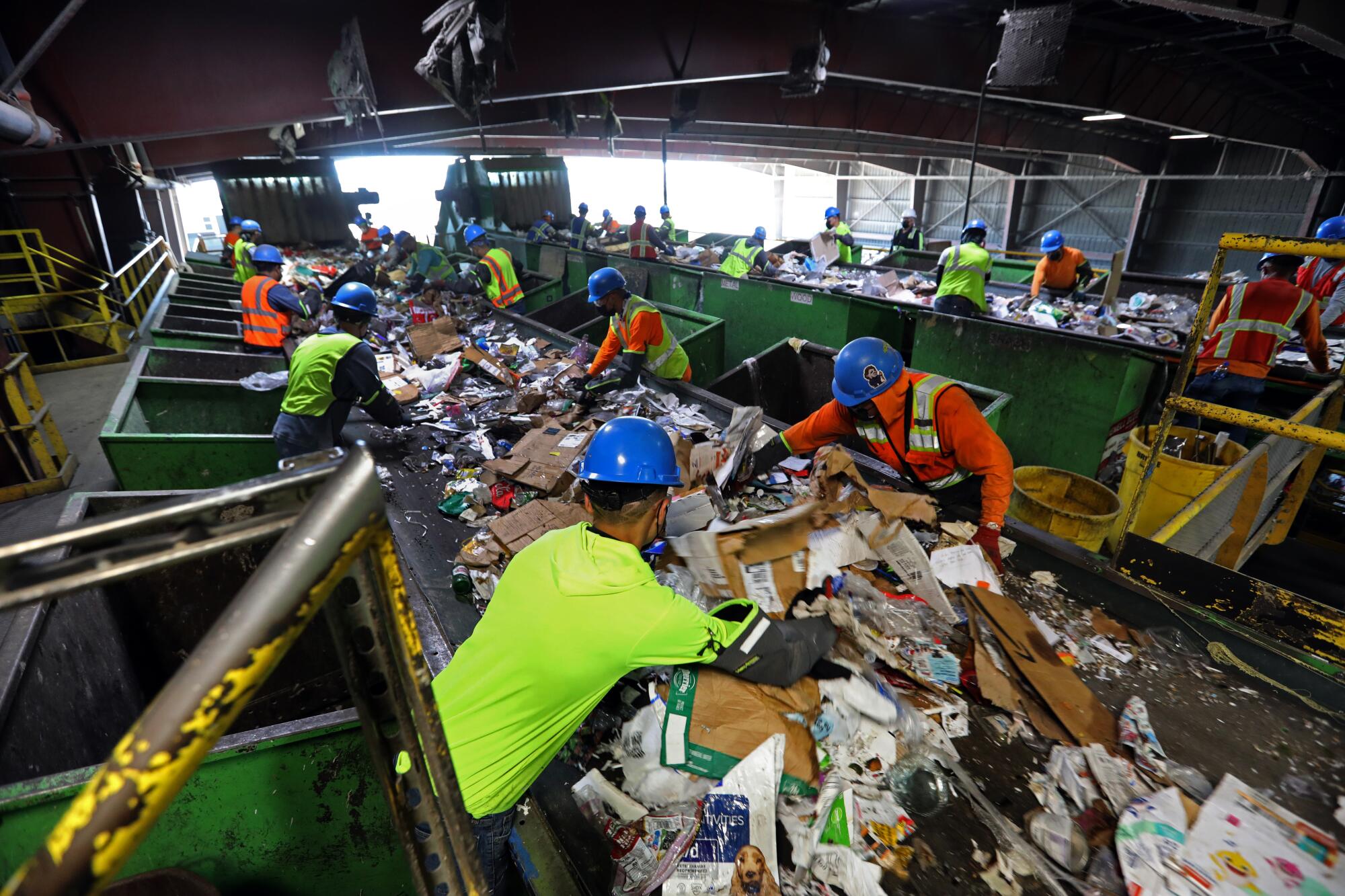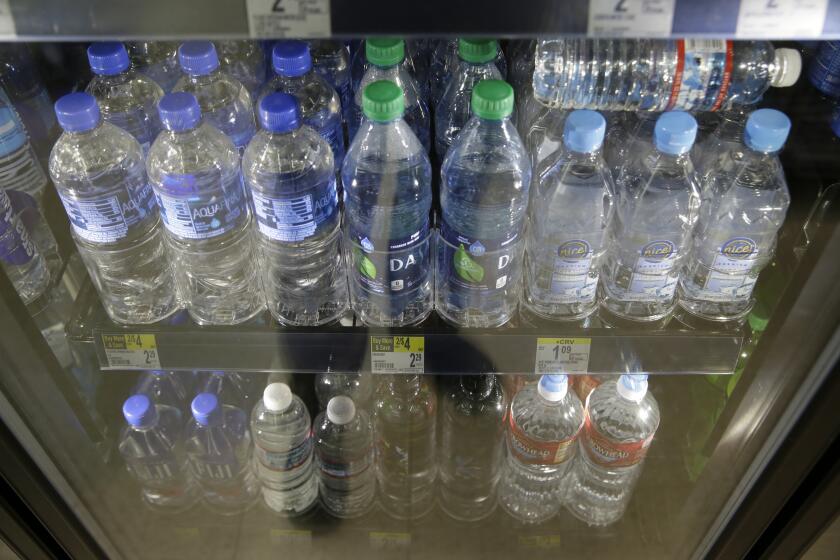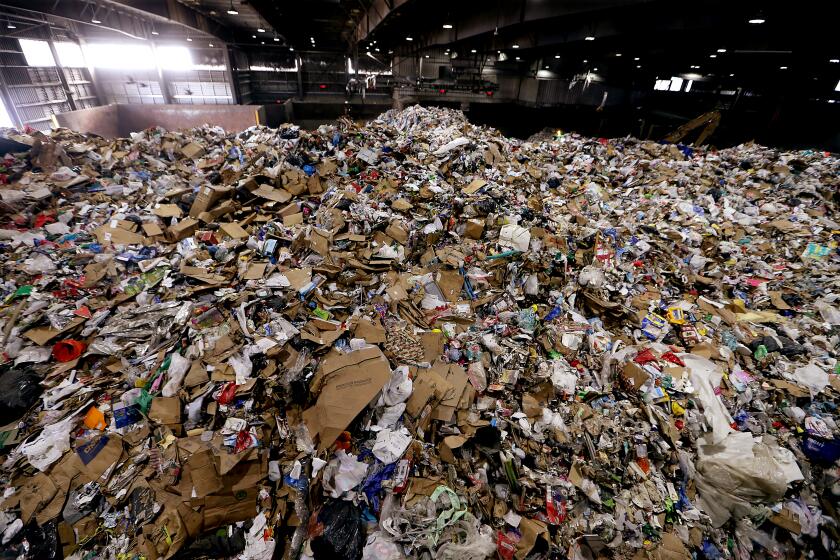
- Share via
They are used to give plastic products their distinctive durability, bendability and sleek, nonstick surface.
Yet some of these chemical additives have been tied to maladies such as breast and prostate cancer, heart disease and diabetes, as well as problems with children’s brain development and adult fertility.
Of particular concern are a class of additives known as endocrine disruptors — chemicals that mimic and confuse hormone signaling in humans.
Aggressive and impactful reporting on climate change, the environment, health and science.
Now, a team of physicians, epidemiologists and endocrinologists have estimated the costs of plastic exposure on the U.S. healthcare system and come to a sobering conclusion.
In 2018, several common endocrine disruptors cost the nation almost $250 billion — just $40 billion shy of Gov. Gavin Newsom’s proposed 2024 budget for the entire state of California.
Nanoplastics are microscopic flecks so small that they can be absorbed into human cells and tissue, as well as cross the blood-brain barrier.
“This study is really meant to put a bright, bold line underneath the fact that plastics are a human health issue,” said Leo Trasande, a pediatrician and public policy expert at New York University’s Grossman School of Medicine and Wagner School of Public Service.
“Fundamentally, we’re talking about effects that run the entire life span study from brain development in young children ... to cancer,” he said.
The study was conducted by researchers from NYU, Children’s Hospital of Philadelphia and Defend Our Health — an environmental organization based in Portland, Maine.
Using epidemiological and toxicity data, the researchers itemized the disease burden of a collection of fairly well-studied chemicals, including bisphenol A (BPA), phthalates, a class of flame retardants known as PBDEs, and PFOAs — the “forever chemicals” used to make nonstick cookware and which have been found in nearly half of U.S. tap water samples tested by the federal government.
They used previously published cost data on select disease burdens to come up with their estimate, which Trasande described as “conservative.”
Both he and Avi Kar, senior attorney and senior director for the Natural Resource Defense Council’s Health and Food, People & Communities Program, said there are tens of thousands of chemicals used in plastic production and manufacturing that probably also contribute to negative health issues, but for which available data are scarce.
“Even from a health perspective, these are likely underestimates,” said Kar, who was not involved in the research. He noted that “in addition to the costs associated with the chemicals and plastics, there are health costs associated with exposures to the macro and micro plastics, as well as the pollution associated with their production and disposal.”
Kar and Trasande said that while research on the effect of micro- and nanoplastics in the human body is still in its early stages — they’ve been found in our brains, lungs, hearts and blood — there is a large body of research on these chemical additives.
The holiday season provides a visible and tangible surge in trash, including food, wrapping paper, aluminum and shipping boxes.
News that we may be ingesting hundreds of thousands of nanoplastic particles every time we drink a liter of water bottled in plastic has researchers concerned — not so much because of the plastic itself, but because these chemicals sit on those particles “like a passenger pigeon,” gaining unfettered entry into our cells and brains, said Trasande.
“Apart from the plastic polymer itself, the chemicals associated with plastic may pose a health risk, if not a greater health risk as they are encapsulated or attracted to these plastic materials,” said Vahitha Abdul Salam, a senior lecturer in vascular pharmacology at Queen Mary University of London.
She noted there are no standard risk assessment measures available for plastics or chemicals associated with plastics, which is why she is working in collaboration with others, such as the U.K.’s WRc Group — a water consultancy firm — “to identify and quantify the amount and types of plastics and their associated chemicals in the water systems and verify the potential harm of the top 10 materials/chemicals to human health using cell-based assays.”
Meanwhile, Trasande and others are hopeful their work will register with lawmakers and spur them to consider the health and financial costs of plastic debris in the environment and humans.
Kar said their work adds to a body of similar analyses, including those published by the Minderoo-Monaco Commission on Plastics and Human Health, an international coalition of researchers and physicians funded by the Minderoo Foundation and the U.N.’s Environment Program.
“What this study tries to do is to say” to plastic manufacturers that “‘it’s not just that you’re hurting people’s lives, it’s that you’re costing the economy. ... You are profiting as companies off the backs of people’s health and well-being,’” he said.
Toward a more sustainable California
Get Boiling Point, our newsletter exploring climate change, energy and the environment, and become part of the conversation — and the solution.
You may occasionally receive promotional content from the Los Angeles Times.










